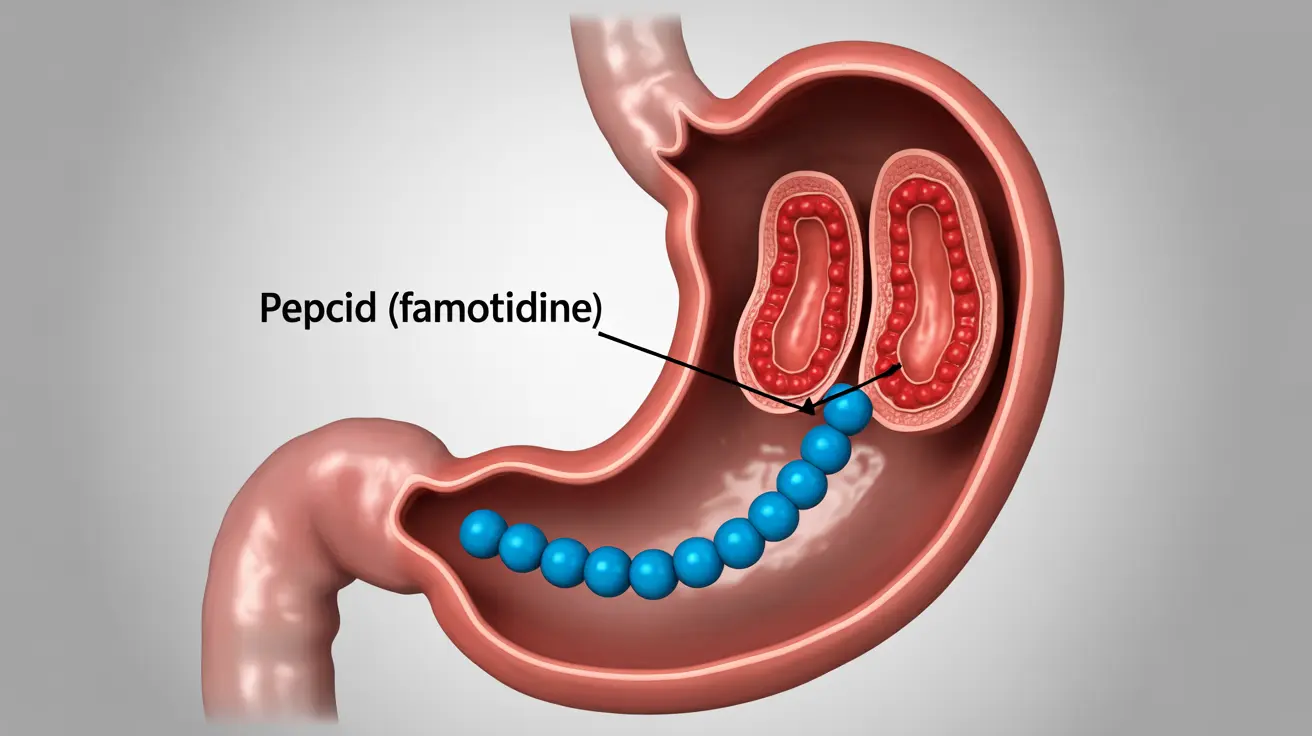Understanding how Pepcid works is crucial for anyone dealing with acid-related digestive issues. As a widely used medication for managing conditions like heartburn, acid reflux, and stomach ulcers, Pepcid (generic name: famotidine) belongs to a class of drugs called H2 blockers or histamine-2 receptor antagonists.
This comprehensive guide explores the mechanisms, uses, and important considerations when taking Pepcid, helping you better understand this common acid-reducing medication.
The Science Behind Pepcid's Action
Pepcid works by blocking specific receptors in the stomach called histamine H2 receptors. When these receptors are activated by histamine, they typically trigger the production of stomach acid. By preventing histamine from binding to these receptors, Pepcid effectively reduces the amount of acid your stomach produces.
This mechanism makes Pepcid particularly effective at maintaining a healthier pH balance in your stomach, providing relief from various acid-related conditions.
Common Uses and Applications
Treating Acid Reflux and GERD
Pepcid is commonly prescribed for managing gastroesophageal reflux disease (GERD) and acid reflux symptoms. It helps reduce the amount of acid that can flow back into the esophagus, providing relief from heartburn and chest discomfort.
Managing Stomach Ulcers
For individuals with stomach or duodenal ulcers, Pepcid helps create an environment conducive to healing by reducing stomach acid production. This allows damaged tissue to repair itself more effectively.
Prevention of Acid-Related Complications
Healthcare providers may recommend Pepcid for preventing stress ulcers in hospitalized patients or managing conditions where excess stomach acid could cause complications.
Timing and Effectiveness
When taken as directed, Pepcid typically begins working within an hour of administration. The medication reaches peak effectiveness between 1-3 hours after taking it, though individual responses may vary.
For optimal results, it's important to take Pepcid consistently and as prescribed by your healthcare provider. The duration of treatment will depend on your specific condition and symptoms.
Safety Considerations and Side Effects
Common Side Effects
While Pepcid is generally well-tolerated, some people may experience mild side effects such as:
- Headache
- Dizziness
- Constipation or diarrhea
- Dry mouth
- Muscle aches
Drug Interactions and Precautions
Pepcid can interact with certain medications, potentially affecting how they're absorbed or metabolized by your body. It's essential to inform your healthcare provider about all medications you're taking, including over-the-counter drugs and supplements.
Frequently Asked Questions
How does Pepcid (famotidine) work to reduce stomach acid?
Pepcid works by blocking histamine H2 receptors in the stomach, which reduces the production of stomach acid. This mechanism helps maintain a proper acid balance in the digestive system.What conditions can Pepcid effectively treat or prevent?
Pepcid can effectively treat various conditions including heartburn, acid reflux, GERD, and stomach ulcers. It's also used preventively for stress ulcers in certain medical situations.How soon does Pepcid start to relieve symptoms like heartburn or ulcers?
Pepcid typically begins working within an hour of taking it, with peak effectiveness occurring between 1-3 hours after administration. However, individual response times may vary.What are the common side effects of taking Pepcid?
Common side effects may include headache, dizziness, constipation or diarrhea, dry mouth, and muscle aches. Most side effects are mild and temporary.Can Pepcid be used safely with other medications or during pregnancy?
While Pepcid is generally considered safe, it can interact with certain medications. Always consult with your healthcare provider before starting Pepcid, especially if you're pregnant, nursing, or taking other medications.
Remember to always follow your healthcare provider's instructions and report any unusual symptoms or concerns while taking Pepcid.




